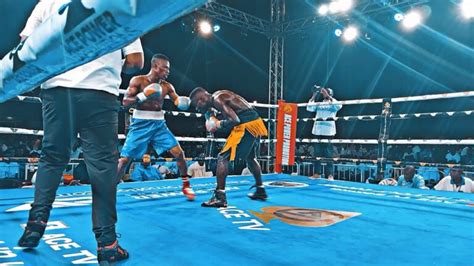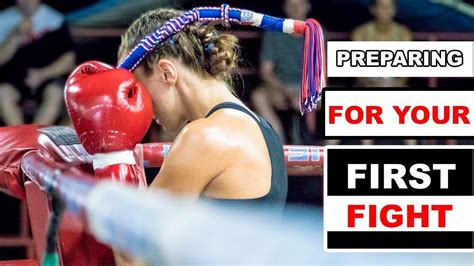Explore the importance of punch types in boxing, techniques, strategies, common mistakes, and tips for mastering various punches in your training.In the dynamic world of boxing, mastering the art of punching is crucial for every fighter, regardless of their experience level. “Understanding Punch Types: What Each One Brings to the Ring” delves into the essential knowledge that can elevate your boxing technique and performance. From powerful jabs to lightning-fast hooks, each punch type serves a unique purpose, contributing to your overall fight strategy. This article will explore the significance of recognizing and perfecting various punch techniques, ensuring you can effectively leverage speed and power in the ring. Whether you’re a novice or a seasoned pro, understanding the nuances of punch types opens the door to improved skills and better fight outcomes. Join us as we unravel the different punches and provide valuable tips to help you master them in your training regimen.
The Importance Of Understanding Punch Types In Boxing
In the world of boxing, Understanding Punch Types is crucial for both aspiring boxers and seasoned fighters alike. Each punch serves a unique purpose and can dramatically influence the outcome of a match. A thorough grasp of punch types allows a fighter to utilize their strengths effectively while exploiting their opponent’s weaknesses.
First and foremost, understanding the different types of punches—such as jabs, hooks, and uppercuts—equips boxers with the versatility needed to adapt their fighting style. For example, a quick jab can be used to create distance or disrupt an opponent’s rhythm, while a powerful hook might be reserved for closing the gap and landing devastating blows.
Moreover, mastering various punch types can enhance a boxer’s defensive skills. Knowing when to counterattack with a specific punch can turn the tide in a fight, allowing for strategic responses that capitalize on an opponent’s mistakes. This strategic understanding contributes significantly to a boxer’s overall performance in the ring.
Understanding Punch Types also plays a fundamental role in training regimens. Recognizing the mechanics of each punch helps coaches tailor workouts to focus on specific skills, thereby ensuring that fighters develop a well-rounded arsenal. In essence, the importance of punch types transcends mere execution; it involves comprehension, strategy, and adaptability—all of which are key elements for success in boxing.
Different Types Of Punches And Their Techniques
In the world of boxing, understanding punch types is crucial for both offensive and defensive strategies. Each punch has its unique purpose, technique, and application. Here, we will explore some of the most common understanding punch types utilized by boxers, including their execution and effectiveness in the ring.
- Jab: The jab is a straight punch thrown with your lead hand. It’s primarily used for setting up combinations, gauging distance, and maintaining range. To execute a jab effectively, start from a guard position and extend your arm forward while pivoting your lead foot.
- Cross: This punch is often used in conjunction with the jab and is thrown with your rear hand. The cross travels straight down the center and is executed by rotating your hip and shoulder forward while pivoting your rear foot. This technique generates power and can lead to knockout opportunities.
- Hook: A hook is a powerful punch that targets the opponent’s head or body from the side. To deliver a hook, bend your arm at a 90-degree angle and move in a circular motion while rotating your hips. This punch can be devastating when timed correctly, especially against an opponent leaning in.
- Uppercut: This punch travels upwards and is typically used to catch opponents off guard, especially when they are in close range. To perform an uppercut, drop your hand slightly before driving it upward in a quick motion, engaging your legs and core for added power.
- Overhand: The overhand punch is a powerful, arcing punch that comes over an opponent’s guard. It’s useful against taller opponents or when they are ducking. Execute an overhand by throwing the punch from behind your head and bringing it down in a sweeping motion, using your body weight for maximum impact.
- Body Shot: This term encompasses punches aimed at the body rather than the head. Body shots can sap an opponent’s energy and lower their guard. Technique varies based on the punch type used, but a good body shot often incorporates short, powerful movements aimed at the ribs or liver.
Each of these punches plays a significant role in developing an effective boxing style. By mastering the techniques for different types of punches, boxers can enhance their overall performance in the ring and strategically outmaneuver their opponents.
How Punch Type Affects Fight Strategy
When it comes to boxing, the effectiveness of your strategy is often determined by Understanding Punch Types. Each type of punch serves a specific purpose and can significantly influence the flow and outcome of a match. For instance, knowing when to employ a jab versus a hook can dictate your defensive and offensive maneuvers during a fight.
A strategic fighter will analyze both their own strengths and their opponent’s weaknesses to decide which punches to throw and when. For example, employing powerful punches can create space and control the opponent, while quicker, lighter punches can be used to keep the opponent at bay or to set up for a more devastating strike. This ability to adapt to the situation is what separates a skilled boxer from the rest.
Moreover, different Understanding Punch Types can change the pace of the fight. A fighter who effectively mixes powerful punches with quicker jabs may frustrate their opponent, causing them to become overly aggressive or make mistakes. This unpredictability can be key to gaining the upper hand, as the fighter can adjust their strategy in real time based on the reactions observed during the bout.
The relationship between punch types and fight strategy is intricate and essential. By mastering different types of punches, a boxer can optimize their fight tactics, control the ring dynamics, and ultimately increase their chances of success in the ring.
Understanding Punch Types: Power Versus Speed
When it comes to boxing, Understanding Punch Types is crucial for fighters looking to optimize their performance in the ring. Two primary elements that differentiate punch effectiveness are power and speed. Each of these attributes serves a distinct purpose and can influence the outcome of a match significantly.
Power punches, such as the knockout blow, rely on brute strength and are aimed at incapacitating the opponent. They require proper technique, body mechanics, and often incorporate the entire body, resulting in increased momentum and impact. Common power punches include the cross and the hook, which, when executed correctly, can turn the tide of a fight in an instant.
On the other hand, speed punches focus on quick execution and precision. These include jabs and uppercuts, which are designed to throw off an opponent’s timing and create openings for more powerful strikes. Fast punches can accumulate points, disrupt an opponent’s rhythm, and overwhelm them long before they can land a significant hit. Mastering speed techniques can often mean the difference between winning and losing in a high-stakes match.
Understanding the balance between power and speed in various punch types allows boxers to devise strategies that play to their strengths. By training to develop both attributes, fighters can become more versatile and unpredictable, making them formidable opponents in any match.
Common Mistakes When Practicing Punch Types
When it comes to understanding punch types, aspiring boxers often fall into several common pitfalls that can hinder their progress and technique effectiveness. Awareness of these mistakes can help athletes refine their skills and enhance their performance. Here are some prevalent errors to avoid:
- Inadequate Footwork: Many boxers focus solely on their upper body punches without paying attention to their foot positioning and movement. Good footwork is essential to deliver effective punches and maintain balance.
- Neglecting Defense: While practicing offense, some fighters forget the importance of defensive techniques. Failing to protect oneself while throwing punches can lead to counterattacks and missed opportunities.
- Overlooking the Importance of Variety: Relying on a limited set of punches can make a fighter predictable. Understanding and incorporating various punch types can keep opponents guessing and open opportunities for effective strikes.
- Power Over Precision: Focusing solely on delivering powerful punches often comes at the expense of accuracy and technique. It’s crucial to find a balance between power and precision for effective striking.
- Insufficient Relaxation: Tensing up while throwing punches can lead to fatigue and decreased speed. Boxers should practice relaxing their muscles to maintain fluid movement and speed during their combinations.
- Inconsistent Practice Routine: Regular and dedicated practice is crucial for developing punching skills. Inconsistent training can hinder progress in mastering different punch types.
- Ignoring Feedback: Not seeking feedback from coaches or training partners can lead to repeated mistakes. Embracing constructive criticism is vital for improving punching techniques.
By recognizing and addressing these common mistakes, boxers can better focus on understanding punch types and improving their overall performance in the ring.
Tips For Mastering Various Punch Types In Training
Mastering different punch types is essential for any boxer looking to enhance their skills and effectiveness in the ring. Here are several tips that can help you improve your punch techniques:
- Understand Punch Types: The foundation of effective training is a strong grasp of Understanding Punch Types. Familiarize yourself with the various punches, such as jabs, crosses, hooks, and uppercuts, and their specific mechanics.
- Shadow Boxing: Practice shadow boxing to develop your form and technique. Focus on executing each punch with precision and speed, imagining an opponent in front of you to enhance your movements.
- Use a Heavy Bag: Incorporating a heavy bag into your training sessions allows you to apply techniques with resistance. Pay attention to your punching angles and follow through to improve strength and power.
- Focus on Footwork: Good punches come from solid footwork. Ensure you practice moving in and out while throwing combinations, as foot positioning is critical for maximizing the impact of each punch.
- Drill with a Partner: Work with a partner to practice punches at different speeds. They can respond with defensive movements, helping you learn to adjust your punches on the fly, which is crucial for in-ring situations.
- Record Your Sessions: Video recording your training sessions can provide valuable feedback. Analyze your form and technique, identifying areas that need improvement.
- Consistency is Key: Regular practice is crucial for mastering punch types. Set aside time each week dedicated solely to practicing these techniques, gradually increasing intensity and complexity.
- Seek Professional Guidance: If possible, consider working with a coach. An experienced trainer can provide personalized feedback and establish specific drills tailored to your learning style.
- Monitor Your Progress: Keep track of your improvements and set achievable goals. This practice will help you stay motivated and focused on mastering different punch types.
By implementing these tips into your training routine, you will foster a deeper understanding of Understanding Punch Types and increase your overall boxing performance.
Frequently Asked Questions
What are the main types of punches in boxing?
The main types of punches in boxing include the jab, cross, hook, uppercut, and shovel punch.
How does a jab differ from a cross?
A jab is a quick, straight punch thrown with the lead hand, used primarily for distance control and setting up other punches, while a cross is a powerful, straight punch thrown with the rear hand, aimed at delivering maximum impact.
What is the significance of the hook punch?
The hook punch is significant because it targets the side of the opponent’s head or body, often catching them off-guard and delivering a knockout blow.
When should an uppercut be used in a fight?
An uppercut is best used when an opponent is leaning forward or has dropped their guard, allowing the punch to travel upwards towards the chin, potentially leading to a knockout.
Can you explain the shovel punch and its effectiveness?
The shovel punch is a hybrid punch that combines elements of an uppercut and a hook, primarily aimed at the head or body, and is effective in close range fights where opponents are tightly engaged.
How does proper technique affect the power of a punch?
Proper technique maximizes the transfer of body weight and momentum into the punch, significantly increasing its power, accuracy, and effectiveness in landing on the target.
What role does footwork play in executing different types of punches?
Footwork is crucial for executing different types of punches effectively, as it helps a boxer maintain balance, create angles, and position themselves optimally for both offense and defense.









